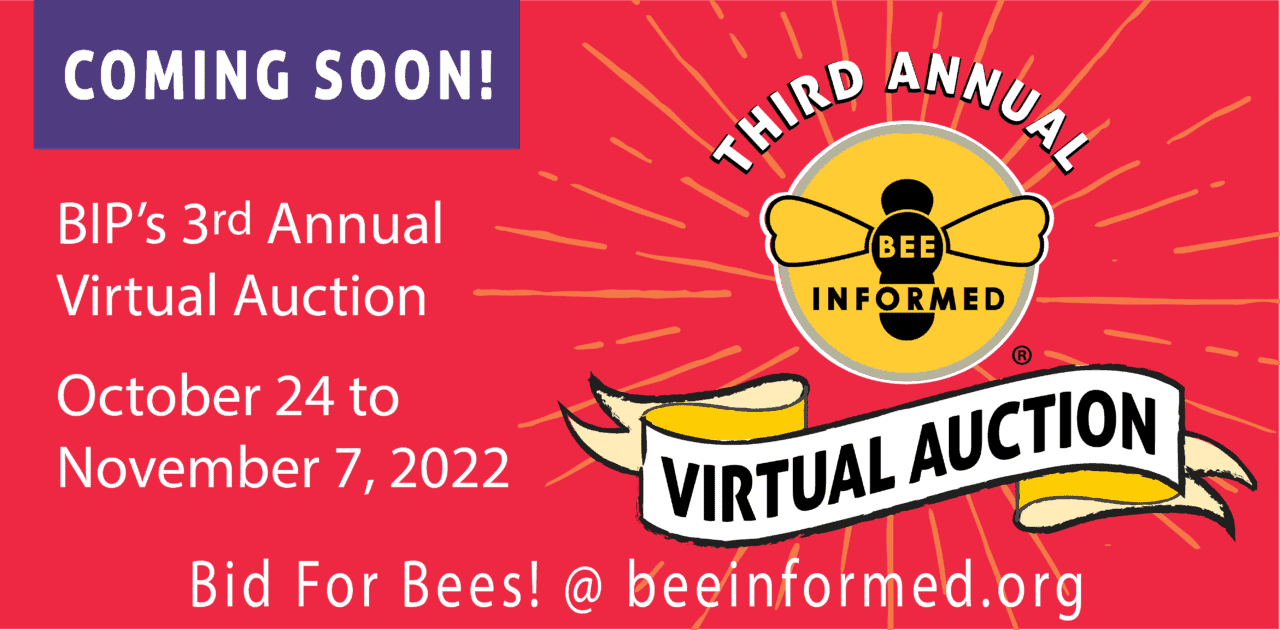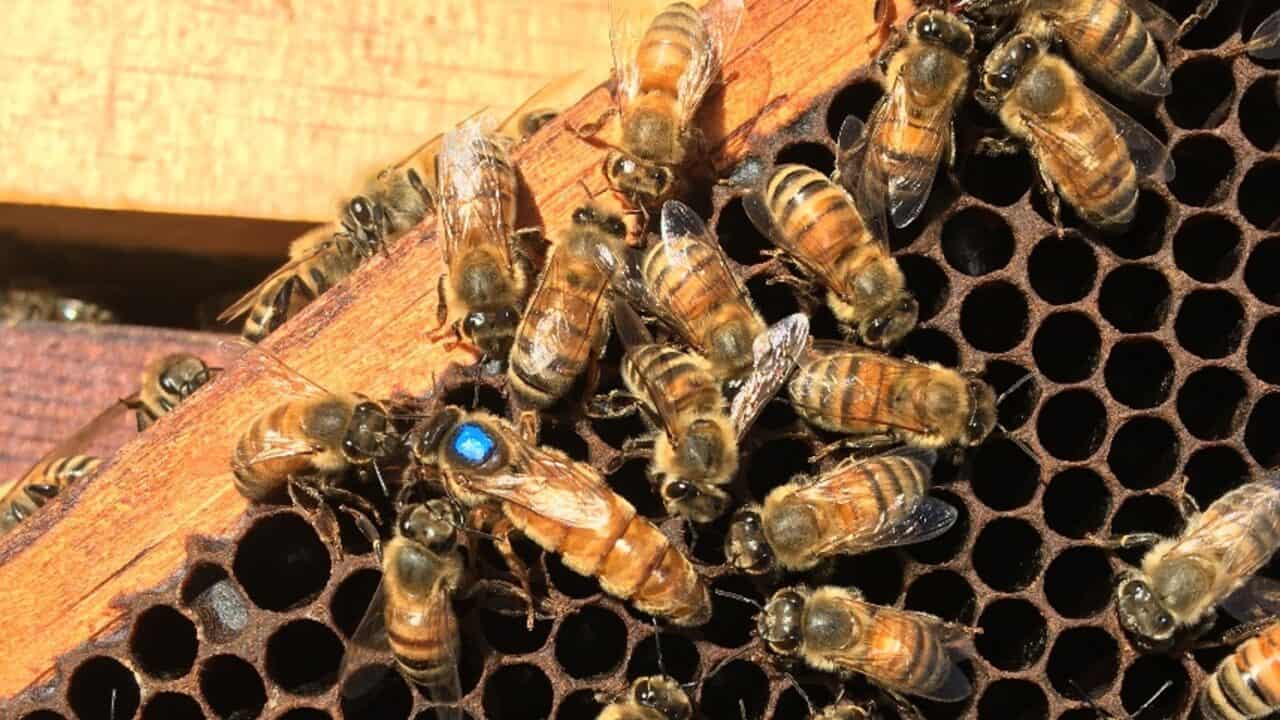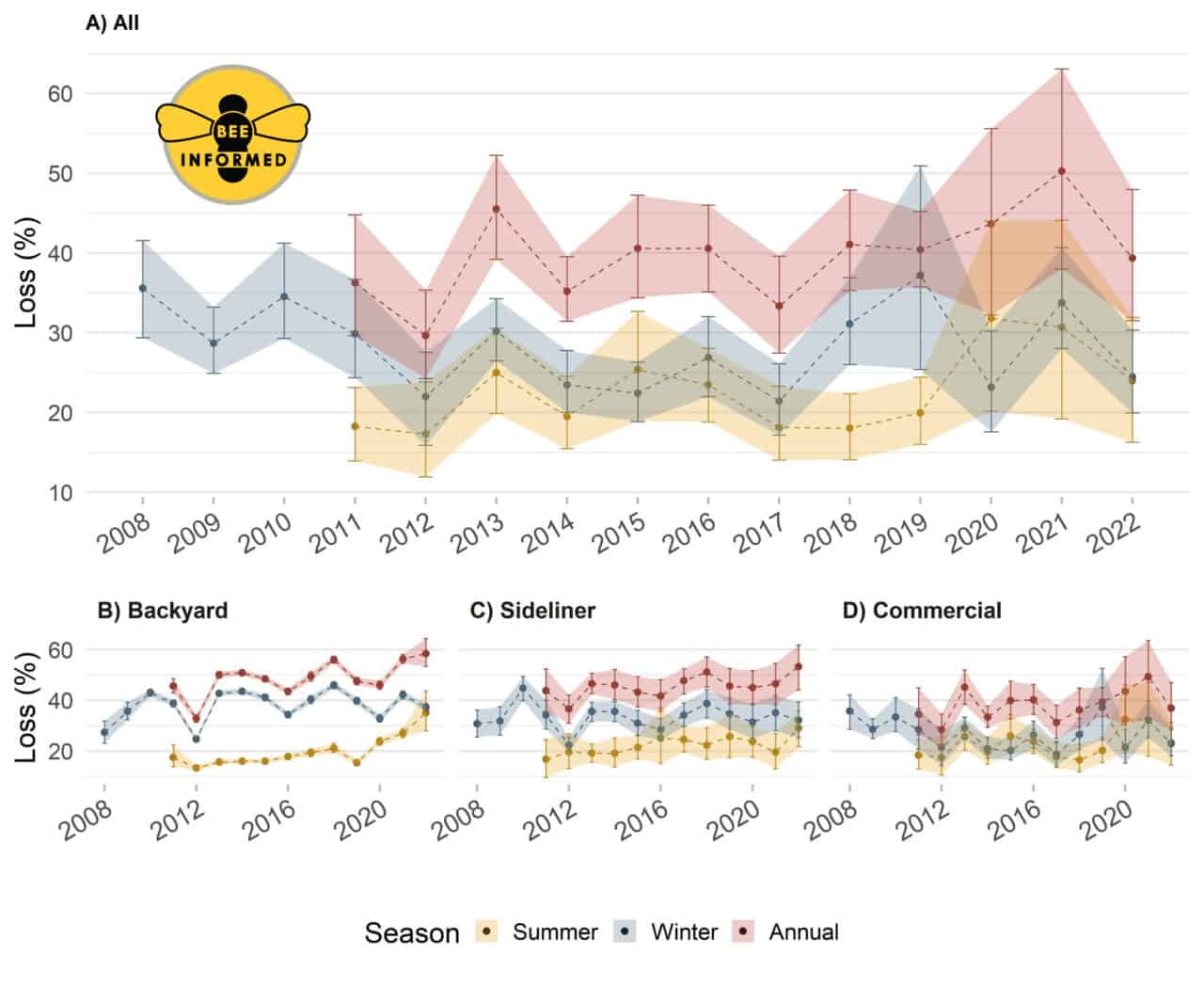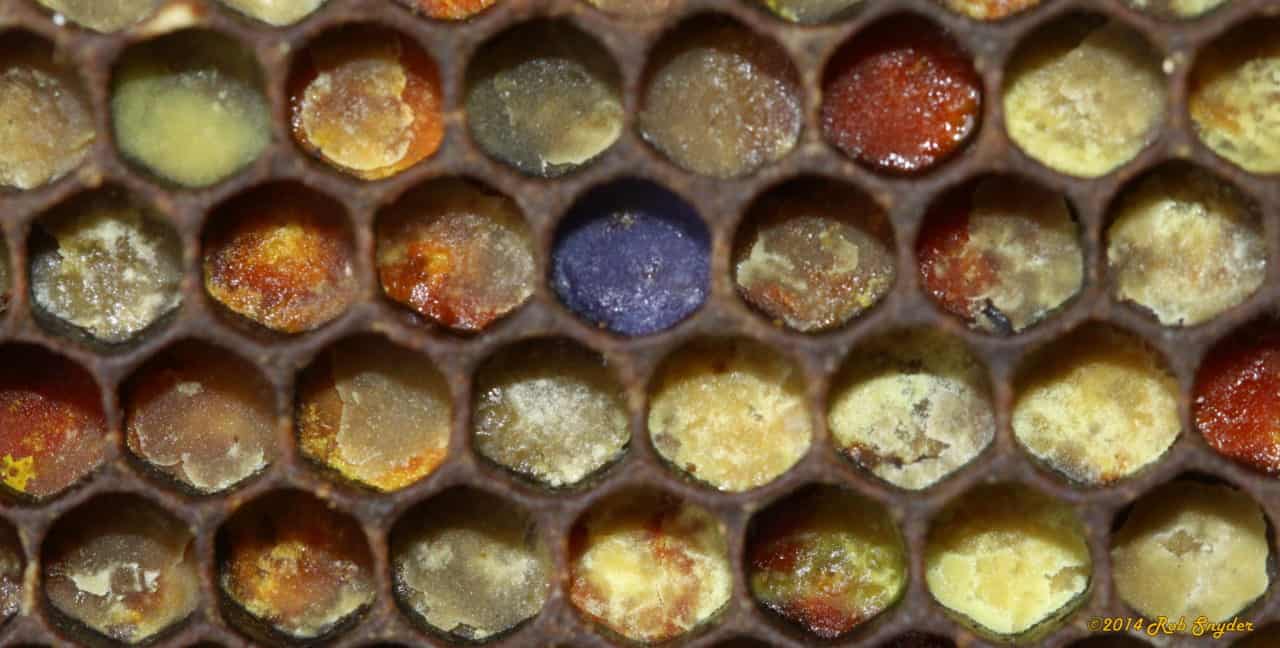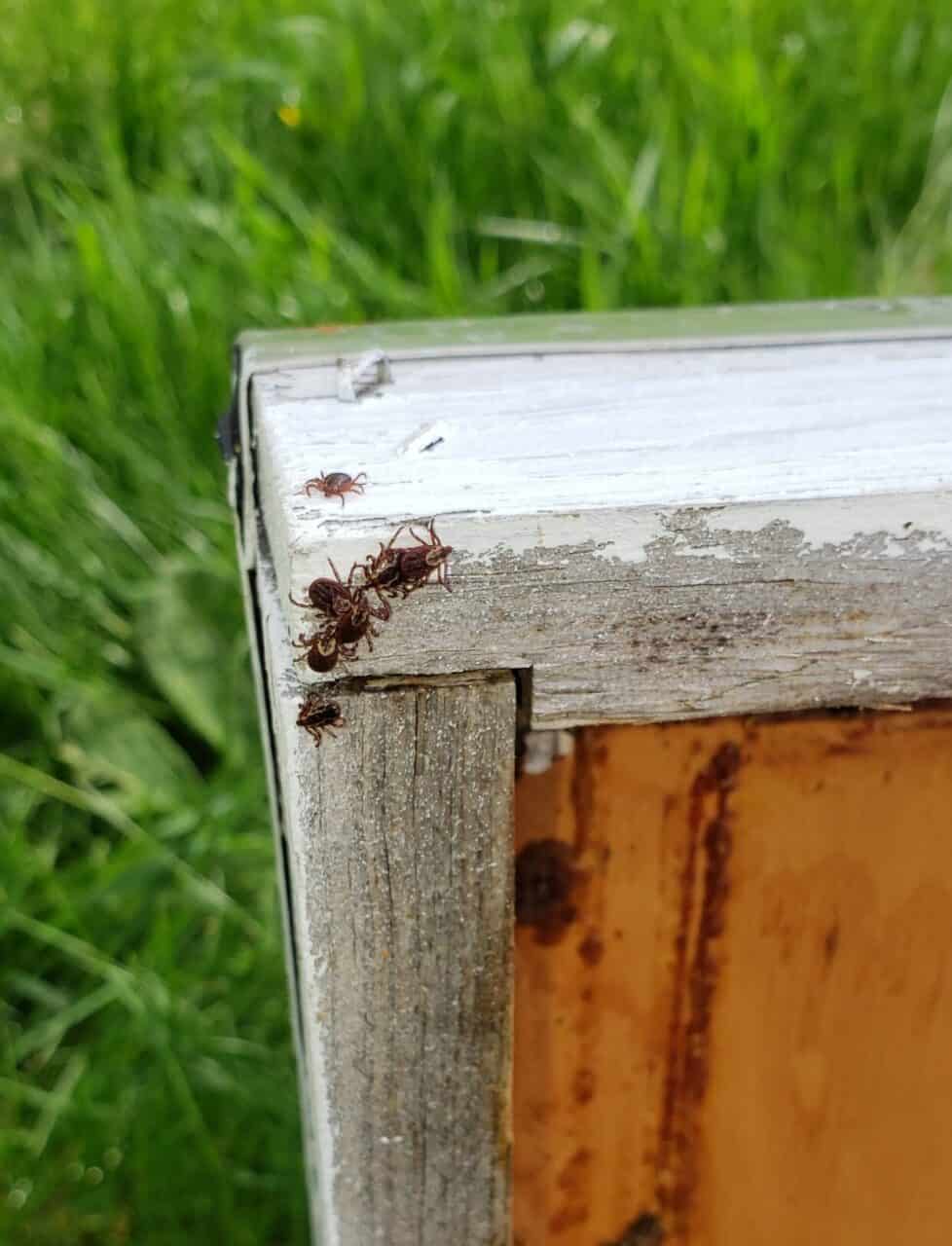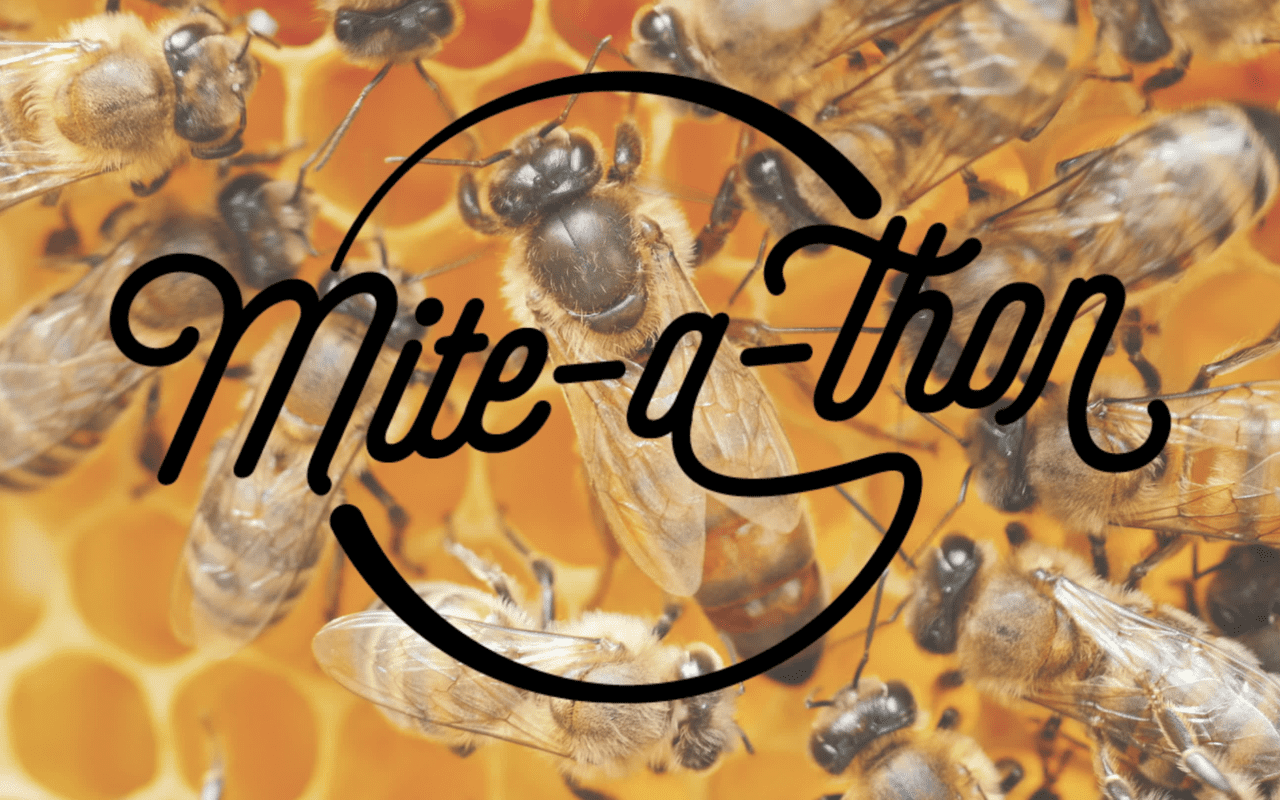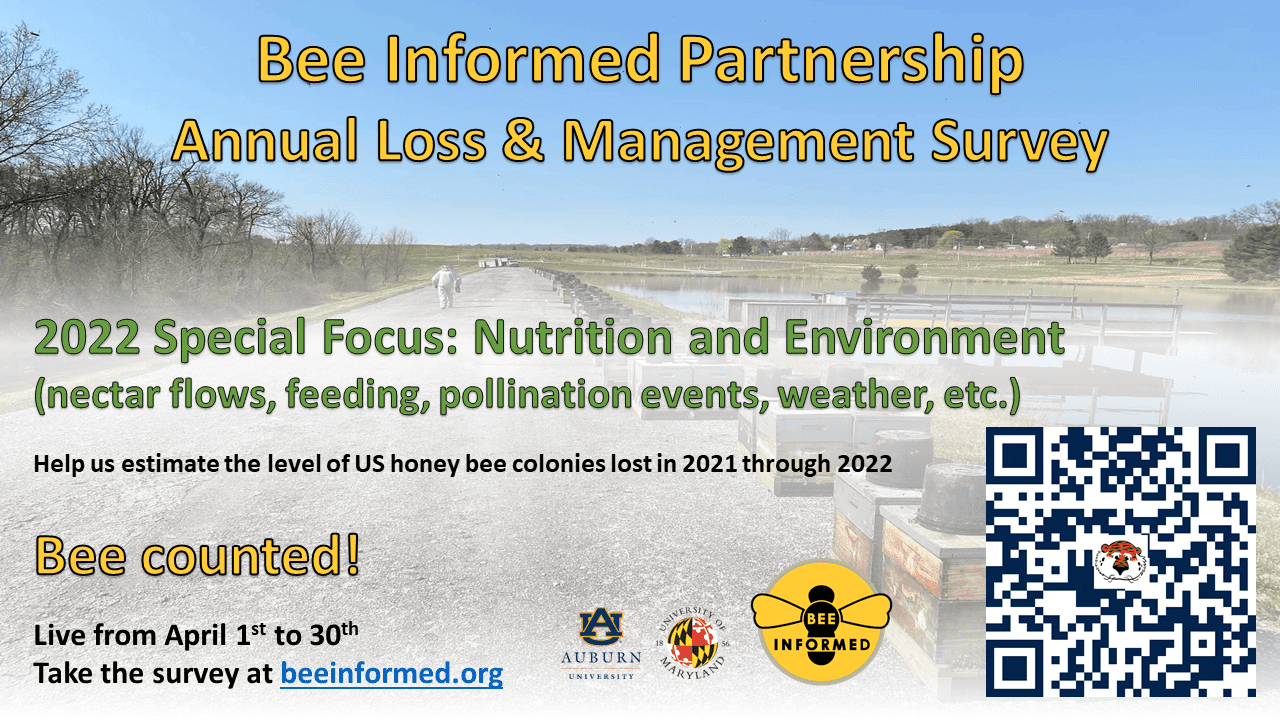The holiday season is here at last! A refreshing moment in time to reflect on the past year and enjoy the company of friends and loved ones. Our team would like to take a moment to express our deepest gratitude to all of you for being stewards of honey bees and our environment and for supporting pollinators and our work to make a positive difference. Without the community of people like you, our sponsoring organizations, partners and other environmentally conscious organizations out there supporting similar missions, none of us can hope to achieve a better health for honey bees. It takes all of us together…
Last Call: Auction Closes November 7, 2022 at 11:59pm (EST)!
With just a few hours left to bid at our biggest fundraising event of the year, we wanted to send a quick reminder to check out our Virtual Auction and peruse over 130 items that all have been generously donated in support of our work here at BIP. To join in the fundraiser, visit beeinformed.org and click “Bid for Bees” to get your final bids in! Even if you don’t win, you are still helping to raise funds! Bee Informed Partnership exists to serve the beekeeping community. The support of our generous donors and community makes this event an exciting part of our year and…
Get Ready to Bid at the 2022 BIP Virtual Auction!!
Are you ready for two weeks of fun for a great cause!? We are excited to share that our biggest fundraising event of the year will be LIVE from 12am (EDT) on October 24th through November 7th at 11:59pm! Join BIP for our 3rd annual Virtual Auction to explore and bid on over 100 items that have been generously donated by our friends across the industry to support a great cause! Check out the auction early at beeinformed.org and click “BID FOR BEES!” Don’t forget to follow us on Facebook & Instagram @beeinformedpartnership for details on items and donors! Help us to spread the word…
Browsing For Breeder Queens-Part 2
Last July 2021, I published the BIP blog "Browsing For Breeder Queens-Part 1" where I discussed what a breeder queen is and the various ways that you can obtain them. So now let's dive deeper into how to test bees for desirable traits to improve your stock. What To Look For In a Breeder Queen There are a number of traits that queen breeders evaluate when selecting breeder queens - color, gentleness, honey production, hygienic behavior, population size and growth rate. However, the weight given to these traits varies by queen breeder, and even by the region or state where the beekeeper is located. Color…
United States Honey Bee Colony Losses 2021-2022: Preliminary Results From The Bee Informed Partnership
Note: This is a preliminary analysis. Sample sizes and estimates are likely to change. A more detailed final report is being prepared for publication in a peer-reviewed journal at a later date. Download .pdf version here Dan Aurell1, Selina Bruckner1, Mikayla Wilson2, 3, Nathalie Steinhauer2, 3, *, Geoffrey Williams1, * 1Department of Entomology & Plant Pathology, Auburn University, Auburn, AL, USA 2Department of Entomology, University of Maryland, College Park, MD, USA 3Bee Informed Partnership, College Park, MD, USA *Joint last authors Corresponding Authors: nsteinha@umd.edu (NS) & williams@auburn.edu (GW) The Bee Informed Partnership (http://beeinformed.org) is a non-profit organization that works alongside beekeepers to improve honey bee…
The 2022 Sentinel Apiary Program – Pesticide Testing Is On The Menu
This year's Sentinel Apiary Program has got some new flavor! If you are a returning Sentinel participant, you will have noticed a big change in the Sentinel program protocol this year. In 2022, instead of testing Nosema levels at six monthly intervals, you received two months of Nosema results tested from samples collected in the early part of the season. You also received one composite pesticide sample. As in past years, you continue to receive six months of Varroa lab results to keep you updated on your current mite loads. And more good news! These results are now provided to you at a faster pace…
How To Cure Bee Fever
Sometimes I get bee fever from overexposure to bees. Symptoms include back aches, honey bees scurrying across the comb hidden behind my eyelids (only detectable when closed at night and sleep is attempted) and an ever-present buzzing where the sound of silence once resided. As BIP’s North Central Tech Transfer Team Field Specialist, I spend what seems like eons behind the wheel of my Chevy truck, commuting from one bee yard to the next. Three times a year I venture out on a three-week pilgrimage from my home base in the Bee Lab at the University of Minnesota, Saint Paul MN, to North Dakota to…
Ticked Off
What is the most hated parasite in beekeeping? Well, if you answered Varroa, you would surely not be alone. Varroa is the bane of the beekeeper’s existence all year round, and deserve the number one spot on the most-hated greatest hits list. But there is another parasite that comes in at a close second - ticks. And this year especially, they seem to be everywhere. Experts at the University of Minnesota hoped that last year’s drought and this year’s cold, wet, late spring would reduce this year's tick population. Unfortunately, this doesn't seem to be the case. BIP's Tech Team Field Specialists on the ground…
Join The 2022 Mite-A-Thon!
Varroa destructor (Varroa), and the viruses it vectors is a significant driver of honey bee colony mortality. Yet, indicators suggest that many beekeepers are not monitoring honey bee colony Varroa infestations and therefore aren’t able to connect infestation to colony loss. Varroa are ectoparasites that breed in the cells of developing honey bees, feeding on bees and transmitting several harmful viruses as they do so. Though it is encouraging to see awareness of these formidable foes growing on all sides of the beekeeping community, it is worrying that recent research results show signs of increasing acaricide resistance in Varroa, and rising virulence of Varroa-vectored viruses.…
One More Week To Complete The Survey!
If you have already taken the 2022 Loss and Management Survey, THANK YOU! Please consider sharing this with all the beekeepers in your life! If you haven't, please take a few moments to take the survey now! TAKE THE SURVEY You’ve heard a lot from us in the last couple of weeks. Thank you for your … patience? In this final week, we thought we would take a step back and let some other folks do the talking. We’re very thankful for the help and support we’re receiving from the whole community. Thank you all, and we’ll be in touch around June to share the…
